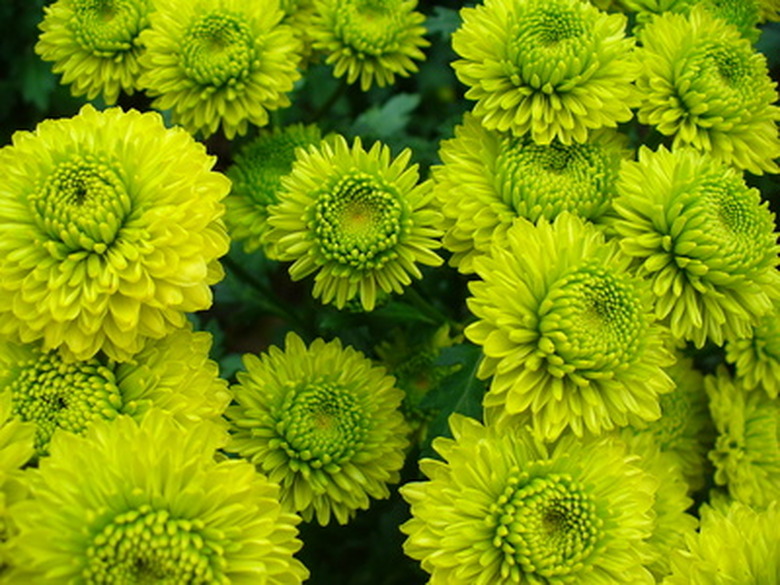Plants & Flowers That Can Survive Frost
If you live in a region that gets cold in the fall and winter, carefully consider which flowering plants you put into your garden. Some plants can survive frost, making them better choices if you live and have a garden in New England, the Mid-Atlantic states or another region where cooler whether brings frost.
Step 1
Chrysanthemums are a plant that can withstand frost, according to Plant-Care.com. Most varieties of chrysanthemums do well in a light frost, however those with white flowers may have a tougher time surviving the chill. Chrysanthemums grow best in soil that is not too moist, but also need to be watered heavily in the hot summer months until they begin to bloom. Though quite hardy, chrysanthemums will not survive if temperatures drop below freezing after a heavy rain.
Hostas
Step 1
Hostas, which are similar to lilies, are another flowering plant that can survive frost. In fact, the best time to plant them is late summer, according to Green Hill Hostas. If you plant hostas a month to a month and a half before the first frost, it allows the plants the opportunity to prepare for winter by establishing strong roots in the warm soil. Even though it is possible to plant your hostas even later, there is a greater chance they will rot over the winter.
Step 2
- Chrysanthemums are a plant that can withstand frost, according to Plant-Care.com.
- Hostas, which are similar to lilies, are another flowering plant that can survive frost.
Phlox
Step 1
Another plant that can survive frost is Phlox. Popular for their multiple colors and fragrance, Phlox can make it through frosty conditions with the proper care. Phlox will bloom in the late spring and some species will continue blooming through the summer. When the frost comes in late autumn, your phlox will wilt. At this time, you should cut down your Phlox stems to about 2 inches above the ground, according to EasyToGrowBulbs.com, to help them survive through the winter.
Coneflowers
Step 1
Coneflowers, known for their purple blooms, are a perennial plant that can survive frost. Because they are derived from wildflowers, they require little care and can make it through chilly conditions. Unlike Phlox, cutting back coneflowers at the end of the blooming season is not necessary. While doing so will not hurt your plant, many birds will eat the seeds from the dead coneflowers in the winter, according to Yardener.com.
Step 2
- Another plant that can survive frost is Phlox.
- While doing so will not hurt your plant, many birds will eat the seeds from the dead coneflowers in the winter, according to Yardener.com.
